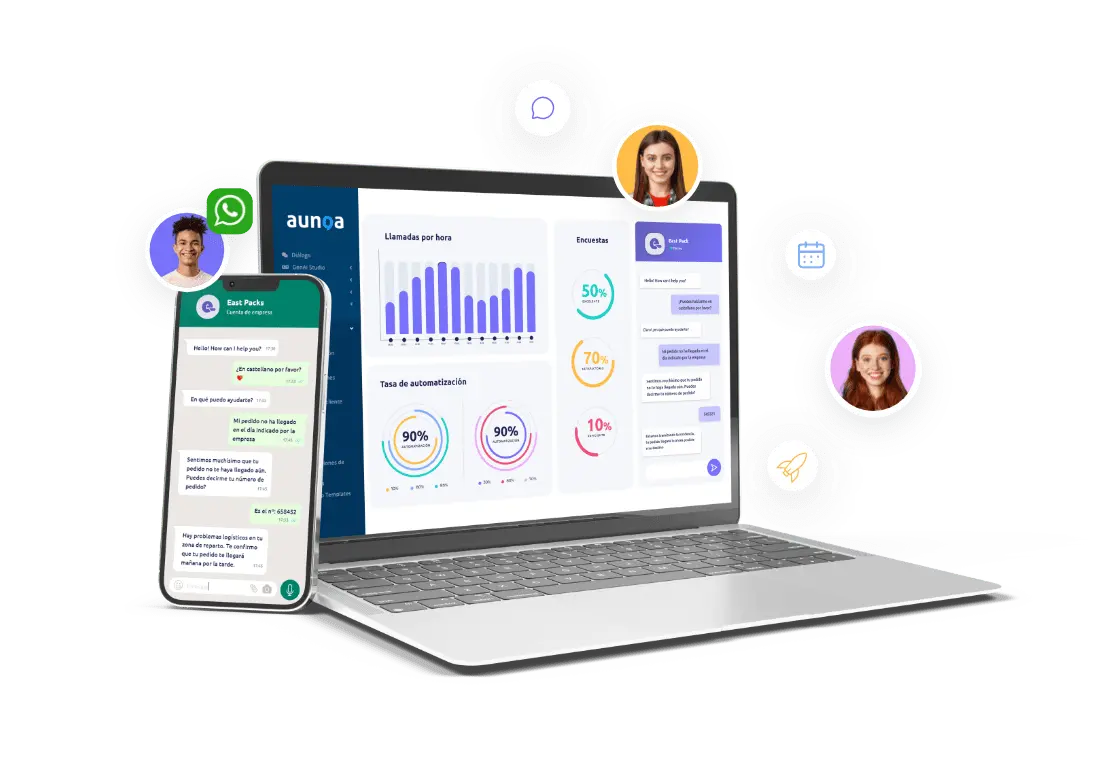Customer service KPIs are metrics that measure the performance and quality of the service offered to customers. With this information it is possible to identify whether the Customer Experience is positive or whether customers are satisfied with the service received.
KPIs or key performance indicators also provide information needed to evaluate the management of different support channels and to determine opportunities for improvement in the customer service strategy.
Delivering quality customer service is only possible with a synchronised and empowered team. The management of the customer service department is as important as customer satisfaction, as the agents will be responsible for delivering an excellent customer experience.
Acording to a study conducted by Forrester, at least 70% of respondents believe that a good company is characterized by adequate customer service and efficient resolution of questions and problems.
For this reason, it is essential for a Customer Service Manager to ensure that their team is continuously improving by focusing on the right KPIs. These indicators will help optimize business processes and identify weaknesses that hinder the quick resolution of inquiries.
Customer satisfaction operational KPIs are indicators that measure the efficiency and effectiveness of a Customer Service team, showing whether they are managing all received inquiries in the shortest possible time and with the highest quality. This information is key to improving customer interactions and optimizing company processes.

The strong performance of the customer service department should be one of your company’s main objectives, as it will enable you to improve service and use data to turn it into profitable actions.
To achieve this, we reveal the key metrics you need to monitor in this article:
The customer service KPIs you should measure:
Average First Response Time (FRT)
It is the time from when a customer makes an inquiry to when they receive a response. Ideally, this KPI should be as low as possible, as it indicates that you are providing prompt answers.
What is the response time your customers are willing to wait? Most users are not willing to wait long and expect immediate answers to their inquiries.
This KPI helps you identify how agile your team is, the time spent responding to frequent inquiries, and how this impacts customer satisfaction.
Average Resolution Time (ART)
The average time it takes your agents to resolve a support issue or inquiry corresponds to the Average Resolution Time (ART). Similar to the previous KPI, the less time customers wait for their issues to be resolved, the higher the customer satisfaction and agent productivity.
This metric is essential for a good customer experience. Measuring it allows you to improve service, set standards for effective responses, and understand the resolution times for the most complex inquiries.
First Contact Resolution Rate (FCRR)
This KPI determines the percentage of inquiries that were resolved in the first interaction with the customer. Based on this indicator, internal operating manuals can be created to explain best practices and establish quick and automated responses to common issues or inquiries.
Accessibility
Excellence in customer service is also related to the level of accessibility of the support and service channels.
It’s essential for customers to encounter no obstacles when contacting a company or trying to access support channels. The more accessible the customer service, the higher the satisfaction. Achieving this requires diversifying support channels and enabling easy and fast access for the resolution of both simple and complex inquiries.
Focusing on optimizing company processes and also on Customer Experience will allow you to achieve better results in customer service indicators.
We’ve already identified KPIs that will help improve the operational side of Customer Service. Now, it’s essential to highlight KPIs related to customer experience.
Customer expectations constantly evolve, becoming more demanding over time. Therefore, it’s important to continuously evaluate and identify data to enhance the quality of the customer experience we provide.
Every customer expects quick assistance and efficient responses. When a customer makes an inquiry, they have expectations regarding speed, flexibility, transparency, personalized attention, reliability, among others. To meet these customer expectations, it’s important to track the following KPIs:
Customer Satisfaction
The ideal indicator to measure satisfaction is the CSAT (Customer Satisfaction Score). Customer satisfaction is measured through surveys that allow them to rate their satisfaction with the product, service, or even with the service received. The overall experience in Customer Service will determine each customer’s score.
Customer Loyalty
Indicators measuring loyalty, such as NPS, provide data related to customer retention and loyalty. Acquiring a new customer is much more expensive than retaining an existing one, making it essential to strengthen loyalty. NPS surveys help identify improvement opportunities through the feedback obtained from customers.
The Customer Churn Rate is an indicator that allows us to identify the percentage of customers who decide to unsubscribe from a service or stop purchasing a product. The lower the churn rate, the closer you will get to your growth objectives, so it’s necessary to establish improvements and actions to prevent a customer from deciding to discontinue using a company’s services.
Customer Lifetime Value
This indicator is related to customer profitability. The Customer Lifetime Value identifies the average amount of money a company will receive from each of its customers. This KPI allows analyzing the monetary value of each customer and breaking down cash flows.
How to optimize Customer Service KPIs with AI
Customer Service KPIs can be optimized through the implementation of Conversational Artificial Intelligence solutions.
Companies that decide to implement AI-powered Chatbots are able to scale their Customer Service departments, automate query resolution processes, and increase agent capacity, saving time and optimizing productivity.
These tools allow for reduced response and resolution times, offering real-time service. Additionally, Artificial Intelligence enables Chatbots to efficiently resolve inquiries.
It’s also proven that AI-powered Chatbots are tools that improve customer service channel management and simplify the user experience by centralizing digital channel management and enhancing support channel accessibility.
Furthermore, these solutions impact satisfaction, loyalty, and retention metrics thanks to their ability to provide personalized interactions.
In summary, Conversational Artificial Intelligence solutions not only improve customer service KPIs but also provide tools to offer quality service, thereby increasing customer satisfaction.
At Aunoa, we implement AI-powered Chatbots, aiming to reduce the digital gap between companies and people. We develop conversational chatbots with AI integrated into various channels and with different CRMs.
Request a demo to learn how we can develop a Chatbot tailored to the needs of your department!





